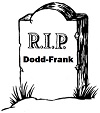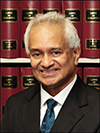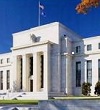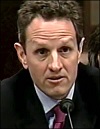-
Recent Posts
- Trump’s “Big Beautiful Bill” Is a Grotesque Giveaway to Fossil Fuel Billionaires While Adding $3.3 Trillion to Nation’s Debt
- Senator Chris Murphy Charges that Trump “Has Opened a Channel for Bribery”
- Congressman Casten: Trump’s Assault on the Rule of Law Is Causing Capital Flight Out of U.S. by Foreign Investors
- Trump’s Approval Rating Drops to 80-Year Low; IMF Says U.S. Tariffs Now Exceed the Highs During the Great Depression
- Nasdaq Has Lost More than 3,000 Points Since Trump’s First Full Day in Office in 2025; the Pain Has Barely Begun
- The Bond Crisis Last Week Was a Global No-Confidence Vote in U. S. President Donald Trump
- Trump’s Tariff Plan Guts $5 Trillion in Stock Value in Two Days; Senator Warren Calls for Emergency Action Before Markets Open on Monday
- Trump’s Attacks on Big Law, Universities, and the Media Have a Common Goal: Silence Dissent Against Authoritarian Rule
- Trump Administration Gives All Clear to Laundering Money through Shell Companies and Bribing Foreign Officials
- Four Megabanks on Wall Street Hold $3.2 Trillion in Uninsured Deposits – Which May Explain Senator Schumer’s Pivot to the GOP to Stop a Government Shutdown
- Here’s What Came Crashing Down Yesterday for Trump’s “Genius” Guy, Elon Musk: Tesla Stock, Access to Twitter (X), His Years of Secret Calls with Putin
- After Banning the Associated Press, Trump Is Now Targeting Specific Journalists That He Wants to See Fired
- Closely Watched Atlanta Fed Model Predicts Negative U.S. Growth in First Quarter
- Trump’s Gangster Diplomacy Makes Front Page Headlines Around the Globe
- Who Benefits Alongside Elon Musk If He Succeeds in Killing the CFPB: the Megabanks on Wall Street that Underwrite His Tesla Stock Offerings
- In Trump 1.0, the State Department Used Taxpayer Money to Publish a Book Elevating Elon Musk to a Superhero; It Was Funded by USAID, the Agency Musk Wants to Quickly Shut Down
- News Host Joy Reid Raises Threat of Trump Selling U.S. to Putin; Ten Days Later Her Show Is Cancelled
- Elon Musk’s DOGE Appears to Be Violating a Court Order; It Has Taken Down Hundreds of YouTube Videos that Educate Americans on How to Avoid Being Swindled
- Barron’s Releases Audio of Jamie Dimon Cursing Out His Workers at a Town Hall, as Dimon Plans to Dump Another One Million JPM Shares
- There’s One Federal Investigative Agency that Neither Trump nor Elon Musk Can Touch: It Just Opened an Investigation into DOGE
- Elon Musk’s Companies Were Under Investigation by Five Inspectors General When the Trump Administration Fired Them and Made Musk the Investigator
- Donald Trump Gives the Greenlight to Goldman Sachs and JPMorgan Chase to Return to Bribing Foreign Officials
- After Tech Geeks Built a Back Door to Loot Billions from FTX, Republicans Refuse to Investigate What Elon Musk’s Tech-Squad Did Inside the U.S. Treasury’s Payment System
- Former Prosecutor, Now U.S. Senator, Informs Tesla That CEO Musk May Be Violating Federal Law and to “Preserve All Records”
- Trump’s Hedge Fund Guy Is Now Overseeing the U.S. Treasury, IRS, OCC, U.S. Mint, FinCEN, F-SOC, and the Consumer Financial Protection Bureau
- As Elon Musk Begins Shutting Down Payments to Federal Contractors, a Strange Money Trail Emerges to His Operatives Inside the U.S. Treasury’s Payment System
- JPMorgan Chase Charged by Yet Another Internal Whistleblower with Cooking the Books
- We Asked Google’s AI Search Model, Gemini, Questions About the Fed and Wall Street Megabanks: It Got the Answers Dead Wrong
- With Trump and Melania’s Crypto Coins Likely to Raise Legal Challenges, Why Didn’t Trump Fire the SEC’s Inspector General in His Purge of IGs?
- Fossil Fuel Industry Could End Up Paying Tens of Billions for LA Wildfires and Deceiving the Public on Climate Change for Decades
- It’s Being Called the Biggest Grift by a President in U.S. History: Trump and First Lady Launch their Own Crypto Coins
- Trump Plans to Install a Fracking CEO to Head the Energy Department and Declare a National Emergency on Energy to Gain Vast Powers
- Fossil Fuel Money Played a Role in the Los Angeles Fires and the Push to Install Pete Hegseth as Secretary of Defense
- When It Comes to Wealth Retention in Retirement, Concrete May Be the New Gold
- Wall Street Watchdog Warns “Clock Is Ticking on a Coming Catastrophic Financial Crash”
- Wall Street Is Sending the Same Message to Americans on Fossil Fuel Financing that It Sent on Cigarettes: Drop Dead
- In a Six-Week Span, this Dark Pool with a Curious Past Traded 3.7 Billion Shares
- Wall Street’s Lobby Firm Hired Eugene Scalia of Gibson Dunn to Sue the Fed for Jamie Dimon
- Postmaster General Louis DeJoy Made $561,051 in Compensation in 2024, as Mail Costs Spiked and Delivery Deteriorated
- Fed Chair Jay Powell Sends a Bold Message to Trump and Tanks the Dow by 1123 Points
- The Head of Fixed Income at T. Rowe Price Makes the Scary Case for the 10-Year Treasury to Spike to 6 Percent
- $663 Billion in Cash Assets Have Gone Poof at the Largest U.S. Banks
- Donald Trump to Ring Bell at New York Stock Exchange Today as Hit List Posters Appear in Manhattan Targeting Wall Street CEOs
- Trump Has a Slush Fund to Prop Up the Dollar – Will He Use It to Prop Up Bitcoin Instead?
- A CEO Assassination; a Billionaire Heiress/NYPD Commissioner; a Secret Wall Street Spy Center – Here’s How They’re Connected
- Despite More than 1600 Tech Scientists Signing a Letter Calling Crypto a Sham, Trump Names a Crypto Cheerleader for SEC Chair
- The Fed Rings a Warning Bell: Hedge Funds and Life Insurers Are Reporting Historic Leverage
- Trump’s Nominee for FBI Director, Kash Patel, Has Businesses Financially Intertwined with Trump
- Donald Trump Is at Risk of Getting Named in a Fossil Fuels Conspiracy Lawsuit
- Trump Is Having Difficulty Getting a Lawyer to Accept the Nomination for SEC Chair: Here’s Why
Search Results for: Federal Reserve
R.I.P. Dodd-Frank: Wall Street Is Unleashed — Again

By Pam Martens and Russ Martens: August 21, 2019 ~ Yesterday the Office of the Comptroller of the Currency, the regulator of national banks, and the FDIC, which provides the taxpayer-backstopped Federal insurance to deposits at these banks, announced that they were going to “simplify” the Volcker Rule. Under the Trump administration, “simplify” is code for “gut.” The Volcker Rule was part of the 2010 financial reform legislation known as Dodd-Frank. It outlawed deposit-taking banks from using those deposits to make wild gambles for the house, known as proprietary trading. It also required the banks to end their ownership of hedge funds and private equity funds where the banks can secretly dump losing positions or hide enormous losses in hard to price instruments. Wall Street hated the Volcker Rule so much that it made sure the rule never came into being. It has stonewalled the implementation of the rule for … Continue reading
Should This Be Illegal – Banks Recommending a Stock to the Public then Secretly Trading It in their own Dark Pool?

By Pam Martens and Russ Martens: August 16, 2019 ~ The Dow Jones Industrial Average rallied 99.97 points yesterday but the mega Wall Street bank, Citigroup, closed in the red, down 0.15 percent. That decline follows a dramatic loss of 5.28 percent on Wednesday, a day that the Dow was down only 3.05 percent. Citigroup’s closing price yesterday was $61.32. The stock has lost more than 88 percent of its value since 2007, despite its attempt to dress up the share price with a 1-for-10 reverse stock split in 2011, which left its long-term shareholders with 1 share for each 10 shares previously held. Citi’s share price has also been dropping like a rock since July 24 of this year when it closed at $73.01. But that hasn’t triggered a rethink on the part of its competitor banks on Wall Street who have “Buy” or “Overweight” ratings on Citi’s stock … Continue reading
Yesterday’s Market Plunge Shines Harsh Light on Big Banks and their Derivative Counterparties

By Pam Martens and Russ Martens: August 15, 2019 ~ As we’ve previously reported, five mega banks on Wall Street hold the fate of the entire financial system of the United States in their crony, frequently soiled hands. Yesterday’s trading action clearly showed the ugly warts between those banks and their derivative counterparties in the insurance industry. And even though their crony regulator, the Securities and Exchange Commission, allows the banks to trade their own stocks in darkness in their own internal Dark Pools, someone else clearly got the upper hand yesterday. The Dow Jones Industrial Average lost a whopping 800 points or 3.05 percent but each of the five mega banks outpaced the Dow’s losses on a percentage basis. That’s not a good thing when Congress has left the fate of a nation in such perilous hands – especially when those very same banks caused the greatest financial crash … Continue reading
Markets Wake Up to a Dicey Global Economy Outlook; Dow Plunges

By Pam Martens and Russ Martens: August 14, 2019 ~ If you are long stocks, this is one of those mornings when you may be tempted to pull the covers over your head and take a mental health day away from financial news. As of 8:44 a.m. this morning, Dow futures were registering a plunge of 394 points; the big Wall Street bank stocks were down about 3 percent in pre-market trading; news was out in the Eurozone that its largest economy, Germany, had contracted by 0.1 percent in the second quarter. Eurostat further dampened the outlook with a report that “in June 2019 compared with May 2019, seasonally adjusted industrial production fell by 1.6% in the euro area (EA19) and by 1.5% in the EU28.” The drumbeat of bad economic news led to a flight to safety into U.S. Treasuries, with the 30-year Treasury Bond reaching an all-time low … Continue reading
Malaysia Indicts 17 of the “Untouchables” at Goldman Sachs

By Pam Martens and Russ Martens: August 9, 2019 ~ When it comes to serial and systemic frauds perpetrated by big banks on Wall Street, the U.S. Department of Justice typically punts. It will either not charge the bank itself or it will issue a felony charge along with a non-prosecution agreement that lets the bank settle the charges without a trial. These tactics by the Justice Department are why Wall Street crimes remain serial and systemic in nature. This morning, the Attorney General in Malaysia stunned Goldman Sachs with an indictment of 17 of its former and current executives. That came on the heels of criminal charges filed last December by Malaysian authorities in the same matter against three Goldman Sachs subsidiaries and two former Goldman employees, Tim Leissner and Roger Ng. Indictments announced this morning included charges against Richard J. Gnodde, Goldman’s top international banker in London and … Continue reading
Central Banks Are in Panic Mode — for Good Reason

By Pam Martens and Russ Martens: August 7, 2019 ~ On July 30, 2019, the day before the U.S. central bank, the Federal Reserve, cut interest rates by one-quarter of one percent, the yield on the 10-year U.S. Treasury note closed the day at 2.06 percent. Early this morning, the yield on the 10-year U.S. Treasury stood at 1.65 percent, a stunning decline of 41 basis points in 8 days. A yield evaporation on U.S. sovereign debt that resembles a snow cone in July is not consistent with a strong economy. It is consistent with a seriously sputtering economy and a stock market out over its skis in terms of valuation. In addition to the collapsing yield in the benchmark 10-year, we now have a seriously inverted yield curve with the 3-month T-bill yielding 2.01 percent this morning versus the 10-year T-note yielding 1.65 – a difference of 36 basis … Continue reading
The New York Fed Bailed Out Financial Gangs on Wall Street and Ended Up Owning a Gang-Riddled Mall in Oklahoma City

By Pam Martens and Russ Martens: August 2, 2019 ~ On April 3, 2008 Federal Reserve Chairman Ben Bernanke and the President of the Federal Reserve Bank of New York, Tim Geithner, appeared on a panel of witnesses before the U.S. Senate Banking Committee. The subject of the hearing was the Federal Reserve’s unprecedented actions the prior month to bail out the collapsing investment bank, Bear Stearns, and facilitate its purchase by JPMorgan Chase. Putting Bear Stearns into the hands of JPMorgan Chase, now a three-count felon, was like returning a garden snake to a pet store and walking out with a python. The New York Fed had crafted a deal where $30 billion of toxic assets were going to be purchased from Bear Stearns to prevent JPMorgan from bearing the risk of sizeable losses when it took over the firm. The New York Fed put up $28.82 billion in … Continue reading
Bernie, It’s Time to Audit the New York Fed

By Pam Martens and Russ Martens: August 1, 2019 ~ On July 21, 2011 the investigative arm of Congress, the Government Accountability Office (GAO), released the first-ever government audit of the Federal Reserve in its 98-year history. The audit came about as a result of the determined efforts of Senator Bernie Sanders to force transparency on the secretive Wall Street bailout actions of the Federal Reserve during the 2008 financial crash and the years that followed. Sanders successfully tacked an amendment on the Dodd-Frank financial reform legislation of 2010 that mandated a top-to-bottom audit of how much the Fed had spent on its bailout and the financial institutions to whom it went. Sanders issued a statement saying this on the day the findings were released: “The first top-to-bottom audit of the Federal Reserve uncovered eye-popping new details about how the U.S. provided a whopping $16 trillion in secret loans to … Continue reading
Democratic Debate July 30, 2019: Highlights that Sizzled

By Pam Martens and Russ Martens: July 31, 2019 ~ Last night’s Democratic Debate could have covered all the positions in the field at Yankee Stadium and had one player left over. In fact, the debate roster should have been limited to nine contenders instead of ten because former Maryland Congressman John Delaney was clearly batting for the other team. Time and time again, Delaney sounded like a die-hard Republican. And Delaney was aided and abetted by CNN moderator Jake Tapper, who phrased one question to Senator Bernie Sanders this way: Tapper: “Let’s start the debate with the number-one issue for Democratic voters, health care. And Senator Sanders, let’s start with you. You support Medicare For All, which would eventually take private health insurance away from more than 150 million Americans, in exchange for government-sponsored health care for everyone. Congressman Delaney just referred to it as bad policy. And previously, … Continue reading
JPMorgan and Sidley Austin Were Involved in the Mysterious $6.7 Billion Company Chaired by Jeffrey Epstein

By Pam Martens and Russ Martens: July 29, 2019 ~ Jeffrey Epstein, the accused sex trafficker of underage school girls, presided over a $6.7 billion offshore company as its Chairman from November 9, 2001 to at least March 19, 2007, a period during which he is accused of committing his sex trafficking crimes against minors. The company is Liquid Funding Ltd. and it had two offshore connections: it was incorporated in Bermuda on October 19, 2000 by the Appleby law firm, known for setting up offshore companies in secrecy jurisdictions like the Isle of Man, Guernsey, Cayman Islands, and Jersey. Liquid Funding’s investment manager was Bear Stearns Bank Plc in Dublin, Ireland – a non-U.S. regulated institution, which was later merged into JPMorgan Bank Dublin. A Securities and Exchange Commission filing by Bear Stearns, prior to its epic collapse in 2008, indicated that Bear Stearns owned 40 percent of Liquid … Continue reading

